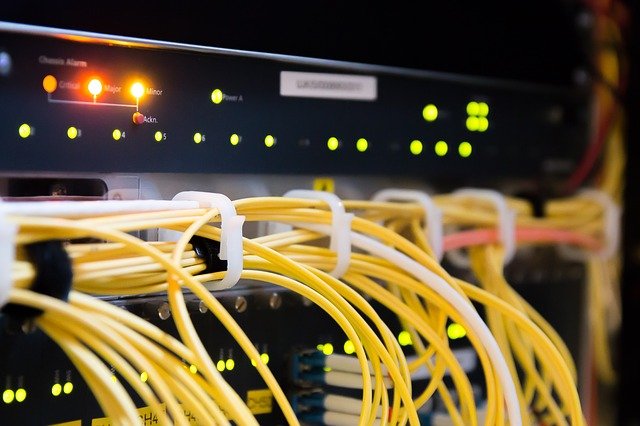Important Questions on Computer Network
Important Questions on Computer Network
Very Short Answer Type Questions (1 mark)
Q 1. Give one example of each – Guided media and unguided media.
Ans: Guided – Twisted pair, Coaxial Cable, Optical Fiber (any one) Unguided – Radio waves, Satellite, Micro Waves (any one)
Q 2. Name the protocol that is used to transfer file from one computer to another.
Ans:FTP
Q 3. Name the transmission media best suitable for connecting to desert areas.
Ans: Microwave
Q 4. Rearrange the following terms in increasing order of speedy medium of data transfer: Telephone line, Fiber Optics, Coaxial Cable, Twisted Paired Cable.
Ans: Telephone line, Twisted Pair Cable, Coaxial Cable, Fiber Optics.
Q 5.Which of the following appears harmless but actually performs malicious functions such as deleting or damaging files.
a) WORM
b)Virus
c) Trojan Horse
d)Malware
Ans: (c) Trojan Horse
Q 6. Name the transmission media suitable to establish PAN.
Ans: Bluetooth, infra-red
Q 7. Name the protocol that is used to upload and download files on internet.
Ans: FTP or HTTP
Q 8. Name the protocol that is used to send emails.
Ans:-SMTP
Q 9. Name the protocol that is used to receive emails.
Ans:-POP
Q 10. Name the transmission media best suitable for connecting to hilly areas.
Ans: Microwave / Radio wave.
Q 11. Name the fastest available transmission media.
Ans: OFC (Optical Fiber Cable)
Q12. Sunil has purchased a new Smart TV and wants to cast a video from his mobile to his new Smart TV. Identify the type of network he is using and explain it.
Ans: Sunil is using PAN-Personal Area Network. It is a private network which is setup by an individual to transfer data among his personal devices of home.
Short Answer Type Questions (2 mark)
Q1. Expand the following terms:
IPR – Intellectual Property Rights SIM – Subscriber‟s Identity Module
IMAP – Internet Message Access Protocol HTTP – Hypertext transfer Protocol
URL – Uniform Resource Locator POP3-Post office protocol ver. III SMTP- Simple Mail Transfer Protocol VOIP- Voice over internet Protocol TCP- Transmission control protocol Wi-Fi – Wireless Fidelity
GPRS – General Packet Radio Service IRC – Internet Relay Chat
CDMA- Code Division Multiple Access TDMA- Time Division Multiple Access VPN- Virtual Private Network
FLOSS- Free Libre Open Source Software XML-Extensible Markup Language SMS–Short Messaging Service
GSM-Global system for mobile communication PHP- Hypertext Preprocessor
FTP- File Transfer Protocol
DHCP-Dynamic Host Configuration Protocol
Q 2. What is difference between star topology and bus topology of network?
Аns: In star topology, nodes are connected to server individually whereas in bus topology all nodes are connected to server along a single length of cable.
Q 3.Write two advantages of using an optical fibre cable over an ethernet cable to connect two service stations, which are 190 m away from each other.
Аns: Low power Because signals in optical fibres degrade less, lower power transmitters can be used. Higher datarate Due to higher bandwidth, data rate of optical fibre is more than the data rate of ethernet cable (upto 1 Gbps).
Q 4.Differentiate between packet switching and message switching technique in network communication.
Аns: Message Switching In message switching data is stored in buffer form. The message is, sent to the nearest directly connected switching node. This process continues until data is delivered to the destination computer. Packet Switching In this form of switching data is transferring into packet form. A fixed size of packet that can be transmitted across the network is specified. All the packets are stored in the main memory instead of disk.
Q 5. Which type of network (out of LAN, PAN and MAN) is formed, when you connect two mobiles using bluetooth to transfer a picture file?
Аns: When two mobiles are connected using bluetooth to transfer a picture file, a PAN(Personal Area Network) is created.
Q 6.What is the difference between HTTP and FTP?
Аns: FTP is a protocol used to upload files from a workstation to a FTP server or download files from a FTP server to a workstation. HTTP is a protocol used to transfer files from a web server onto a browser in order to view a web page that is on the Internet.
Q 7. What is the advantage of using SWITCH over HUB?
Аns: Switch provides a dedicated line at full bandwidth between two devices but hub doesn’t provide a dedicated line. Hub share the bandwidth.
Q 8.What is difference between star topology and bus topology of network?
Аns: In star topology, nodes are connected to server individually whereas in bus topology all nodes are connected to server along a single length of cable.
Q 9.Define the term firewall.
Ans: Firewall is a feature used for Network Security. In a Network there is always danger of information leaking out or leaking in. Firewall is a feature which forces all information entering or leaving the network to pass through a check to make sure that there is no unauthorized usage of the network.
Q 10.What is the importance of URL in networking?
Ans: URL stands for Uniform Resource Locator. Each page that is created for Web browsing is assigned a URL that effectively serves as the page’s worldwide name or address. URL’s have three parts: the protocol, the DNS name of the machine on which the page is located and a local name uniquely indicating the specific page(generally the filename).
